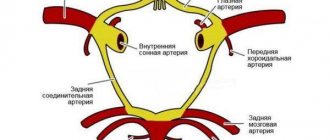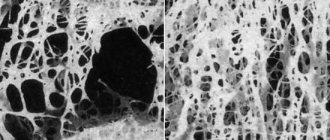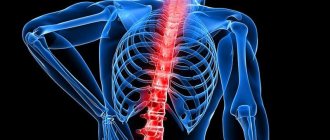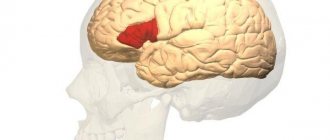Dilatation is the physiological or pathological stretching of any hollow organ of the human body, in which hypertrophy of the walls is not observed. The heart is an organ with four sections: two ventricles and the same number of atria. Each section of a muscular organ is capable of dilatation for various reasons. The main problem with this process is the inability to pump the required volume of blood. Stagnation is observed, as a result of which the pathological process progresses. Timely diagnosis of the disease is important to prevent a fatal outcome.
Causes
The pathological mechanism for the development of atrial dilatation is based on the difficulty of blood flow through the atrioventricular openings, through which the cavities of the ventricles and atria communicate.
The reason for the expansion of the cavity of the left atrium is most often long-lasting increased pressure in the systemic circulation, caused by systematic significant physical activity. Another cause of right atrium dilatation can be atrial fibrillation, although in many cases it develops as a complication of pathological expansion of the heart chamber.
Atrial fibrillation can lead to dilatation of the right atrium
Dilation of the right atrium is caused by an increase in blood pressure in the pulmonary circulation, which may be due to the following factors:
- chronic bronchopulmonary diseases, which are characterized by spasm of the bronchial muscles;
- congenital and acquired pathologies of the blood vessels of the lungs;
- infectious lesions of the heart muscle;
- pulmonary hypertension;
- congenital or acquired heart defects.
Types of dilatation and reasons for its occurrence
There are two types of dilatation of the heart chambers:
- tonogenic dilatation develops in the chambers due to high blood supply. At the initial stages, the muscle wall remains non-hypertrophied;
- myogenic dilatation appears due to significant thickening of the heart wall, for this reason the contractile function of the myocardium suffers.
Common causes of dilatation of the heart chambers
The causes of overstretching of the chambers of the heart may be previous inflammatory diseases, when an infectious agent attacks the heart muscle. There are frequent cases of fungal, parasitic and viral invasion, which negatively affect not only the contractile function of the myocardium, but also significantly enlarge the physiological cavities of the heart. The toxic effect of alcohol and drugs, as well as some medications, have a negative effect on the main pump of the human body. Cases of dilatation of the heart chambers due to autoimmune, endocrine and oncological diseases have been reported.
Left atrium dilatation
The main role of the left atrium is to pump oxygenated blood to the left ventricle, from where it enters the aorta and is distributed to all human organs.
The most common cause of left atrium enlargement is a narrowing or other pathology of the valve located between the left chambers of the heart.
If the opening between them is insufficient, a large volume of blood cannot be quickly transferred from the left atrium, forming stagnation, which subsequently leads to stretching of the chamber walls. In addition, reverse blood flow is possible through the valve, which also provokes expansion of the atrium.
Another cause of left atrium enlargement is atrial flutter - atrial fibrillation. However, arrhythmia can develop secondarily, joining dilatation.
Main symptoms of left atrium dilatation
The symptoms of this disorder do not have their own distinctive signs, since they exist only in connection with other diseases. A person may complain of arrhythmia or valve stenosis. Among them are severe or moderate shortness of breath, pallor and cyanosis of the skin.
Left ventricular dilatation
The reason that causes dilatation of the left ventricle of the heart is the narrowing of the aortic valve, which connects it to the aorta. The left ventricle performs the main pumping function, pumping blood to all organs of the human body. Therefore, even minor changes in the aortic valve will lead to severe distension of the ventricle. Also, the cavity of this chamber can change greatly due to arterial hypertension, coronary heart disease and myocarditis.
Right atrium dilatation
The right atrium carries venous blood with carbon dioxide coming from organs and tissues. It is a link in the pulmonary circulation, and the reasons that provoke the development of dilatation of the right atrium are lung diseases. Congenital and acquired valve defects also play an important role in the occurrence of pathology.
Right ventricular dilatation
The main reason why the right ventricle expands is pulmonary hypertension, which forms when there is excessive load on the pulmonary circulation. Valvular changes as a result of bacterial infection (infective endocarditis) or fungal infection, as well as rheumatic heart disease, cause significant right ventricular dilatation.
Signs
Slight or moderate atrial dilatation occurs without any clinical symptoms and is usually detected incidentally during an examination for another reason, and is essentially a diagnostic finding.
The main symptom of atrial dilatation is arrhythmias
Significant expansion of the atria is accompanied by a deterioration in their pumping function, which leads to the appearance of arrhythmia and the development of chronic heart failure. Symptoms:
- heart rhythm disturbance;
- dyspnea;
- increased fatigue;
- swelling of the limbs.
Symptoms
The manifestation of clinical signs is heterogeneous. The nature of the clinic will depend on which areas are enlarged.
Typically this is:
- chest discomfort or pain;
- dyspnea;
- loss of strength, fatigue;
- cardiomyopathy;
- rhythm disturbance;
- peripheral edema.
Other symptoms will depend on the underlying cause that causes the dilatation.
The appearance of shortness of breath is one of the first signs of the disease
Diagnostics
The main method for diagnosing atrial dilation is ultrasound examination of the heart. It allows you to assess the volume of the heart chambers, the thickness of the myocardial walls and the characteristics of their contraction, to identify possible pathology of the pericardium, blood clots in the cavities of the heart, and signs of damage to the valve apparatus. The data obtained during the study is compared with the norm, taking into account the patient’s height and weight. The diagnosis of “dilatation” is made when the volume of one or more chambers of the heart increases by more than 5%.
The main method for diagnosing atrial dilatation is cardiac ultrasound.
Other instrumental methods are also used in the diagnosis of atrial dilatation:
- electrocardiography. It allows you to identify irregularities in the rhythm of contractions, as well as make a differential diagnosis between atrial enlargement and other heart diseases;
- radiography. Signs of dilatation are cardiomegaly (increase in the size of the heart shadow), spherical shape of the heart, symptoms of pulmonary hypertension, expansion of the roots of the lungs;
- angiocoronary angiography. It allows you to clarify the structural features of the heart, and is usually performed to select surgical treatment tactics.
Atrial dilatation requires differential diagnosis with hereditary cardiomyopathies, myocarditis, coronary artery disease, congenital and acquired heart defects, and dissecting aneurysm.
Definition
The human heart, like a hollow muscular organ, has its own margin of safety.
It consists of two atria and ventricles, through which blood is pumped throughout the body. Sometimes it happens that the amount of it entering the cavity exceeds the permissible volume. Thus, the walls are subjected to increased stress, which over time causes them to stretch (dilate). Dilatation of the left atrium is most common. A change in its size occurs against the background of impaired blood outflow. An increase in volume on the left side can lead to diseases of the right side of the heart if timely treatment is not resorted to. This condition is dangerous because it does not manifest itself in any way in the first stages of development.
To fully diagnose this pathology, the patient is prescribed a series of studies. During their implementation, concomitant diseases are often discovered, which are the cause of impaired heart function. This may be tachycardia, stenosis or measuring arrhythmia.
It is worth understanding that early diagnosis will allow you to avoid irreversible consequences, which is why it is important to consult a doctor at the slightest ailment.
Treatment
In many cases, it is not possible to identify the cause that caused the development of atrial dilatation, and therefore treatment is aimed at combating chronic heart failure. For this purpose, patients are prescribed:
- diuretics;
- beta blockers;
- antiarrhythmic drugs;
- ACE inhibitors;
- cardiac glycosides;
- antiplatelet agents.
If the cause of atrial dilatation can be eliminated, then their volume may gradually decrease and return to normal values.
If conservative therapy for atrial dilatation is ineffective and symptoms of chronic heart failure increase, the issue of surgical treatment is decided. It consists of installing a pacemaker that improves hemodynamic processes.
Installation of a pacemaker is indicated when conservative treatment of atrial dilatation is ineffective
For severe heart failure, the only treatment is heart transplantation. However, this operation is performed extremely rarely due to its high cost and complexity.
Dilatation of the aorta of the heart
Dilatation of the aorta of the heart and aortic aneurysm is a heart disease accompanied by weakening of the vessel walls. This often occurs with high blood pressure. The whole difficulty lies in the fact that the weakness of the vessel can result in rupture of the walls. And if the hemorrhage is not stopped in time, then death occurs. Moreover, failure of normal blood flow in a vessel always means a risk of thromboembolism. And the appearance of blood clots is already a mortal danger.
This cardiac pathology most often does not have severe symptoms. But signs can make themselves felt depending on the location of the aneurysm and the degree of its localization. So, for no particular reason, the patient may suddenly begin to cough, and due to compression of the trachea, a sore throat also appears. But the symptoms concern not only breathing, but also the digestive system. So, it becomes difficult for a person to swallow food.
When an aneurysm ruptures, severe pain is felt and a state of shock develops. Most often, the prognosis is the same – death.
How dangerous is the pathology?
The condition threatens the development of a group of complications, including:
- Myocardial inflammation. They are formed as a result of blood stagnation and muscle malnutrition.
- Atrial fibrillation and then ventricular fibrillation. Characterizes severe arrhythmia, the functioning of cardiac structures is disrupted. The parallel course of the two processes determines the increased risks of death.
- Formation of blood clots, blockage of large vessels with a blood clot. A typical consequence of dilatation, since stagnation of blood contributes to its thickening.
- Congestive heart failure. In essence, this is dysfunction of a muscular organ of varying severity. It is determined by a group of species that differ in clinical manifestations, prognosis, and recovery prospects.
- Heart attack. Acute malnutrition of cardiac structures and, as a result of tissue necrosis, replacement of functionally active myocyte cells capable of contracting and conducting electrical impulses with rough scars. It is essentially dead tissue. The more it is, the worse the heart works.
- Paroxysmal arrhythmia. Usually of the type of tachycardia (acceleration of the activity of cardiac structures).
- Mitral insufficiency. It suggests possible regurgitation (reverse flow of blood from the ventricles into the atria), disruption of the functional activity of the organ and blood output, and a drop in hemodynamics. Lethal outcome is a matter of time.
- Cardiogenic shock. Acute, urgent condition. Requires urgent assistance, but the chances of the patient returning are almost negligible. Even if you are lucky, death will occur within a few years. Exceptions can be counted on one hand throughout the entire solid practice of doctors around the planet.
- Heart failure. Asystole.
Preventing the development of complications is one of the goals of treatment at any stage. It is best addressed early.











